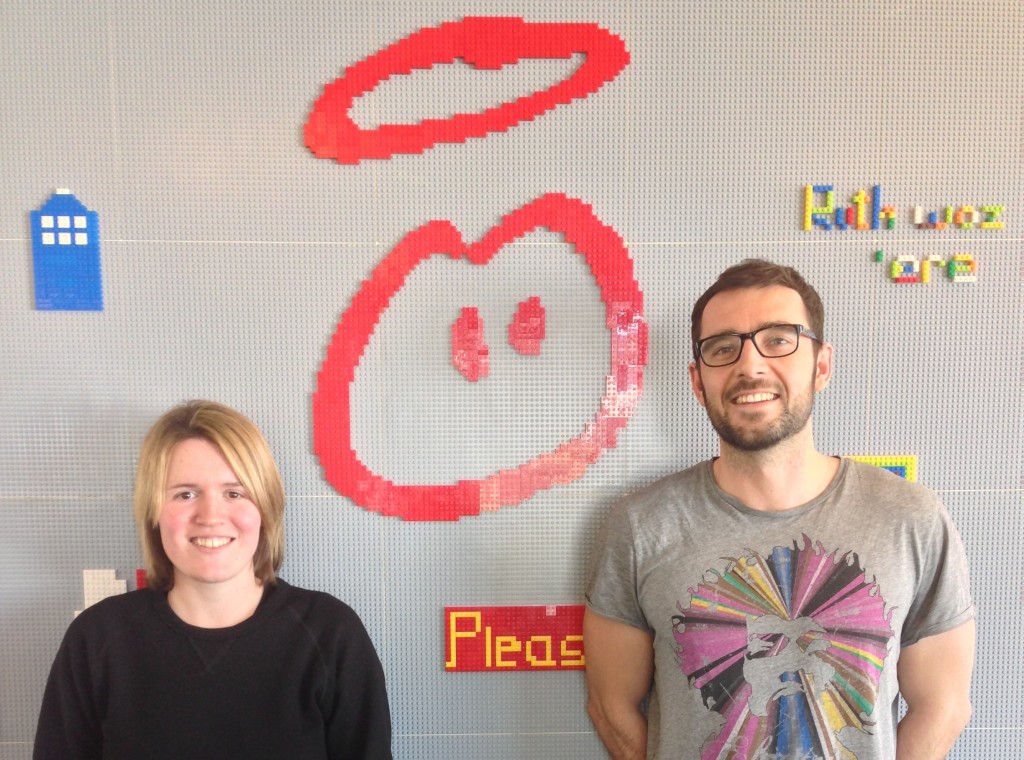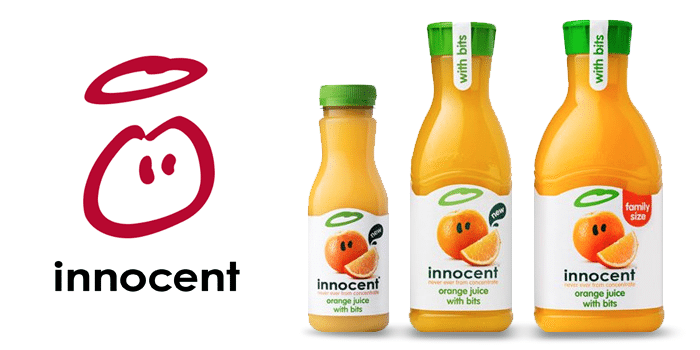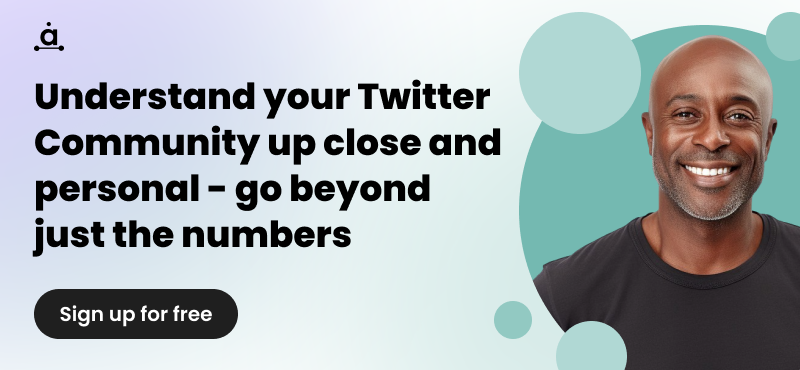[Interview] How did Innocent Drinks drive a 35% engagement rate on their Twitter Ads?
Are you ever worried that your social presence is a little dry and could do with being a little juicier? Well, orange you glad to see Audiense and Innocent pear up to help your Twitter profile become the apple of your customer’s eye?
UK beverage giant Innocent Drinks began life in 1999 and is now valued at over £320m, employing over 300 people across Europe. Coined Innocent for their pure and natural approach to fruit smoothies, the company built its brand on honesty, an active willingness to engage with their customers, and a totally bananas style of communication that is reflected in their marketing activities. These traits meant that they were able to adapt quickly and successfully to Twitter when they joined in 2008, and to other social networks as they emerged, building a personality and following that would be the envy of the FMCG market.
They now post consistently engaging content with staggering engagement rates from their 730,000+ fans on social media, that brings serious benefits that they were keen to elaborate on. We spoke to Joe McEwan, Head Of Digital & Communities, and Helena Langdon, Communities Manager, about why this level of interaction is so important to Innocent Drinks, how they have started full marketing campaigns on Twitter, and how to build up a loyal, vocal customer fanbase like theirs.
Audiense: What are the social media strategies and objectives for Innocent Drinks?
Joe McEwan: "As an FMCG brand, primarily our aim is to engage people and spread brand awareness. We look to do this by producing conversation-starting content, and delivering brilliant customer service.
Helena Langdon: "We want to tell people about us in the most engaging way we can. It’s our goal to make our pages a place on social media where people want to visit and enjoy seeing in their timelines, then people won’t mind when we try to sell them drinks every now and again."
McEwan: "All of our social activities are an extension of what we’ve always done. Right from day one we talked to people on our packaging and used it to invite people to get in touch. In the early days we had no money for TV or print ads so we used our packaging to talk to people, to start conversations. And we’ve always talked like human beings. No jargon, no technical mumbo jumbo. Just normal words, written in an honest, engaging way. People really connected with that. It helped to set us apart, and it got people talking about us. It’s completely ingrained in the company that we should look to talk to people wherever they might be."
 Helena Langdon and Joe McEwan, Innocent Drinks
Helena Langdon and Joe McEwan, Innocent Drinks
How do you keep the characteristic Innocent tone of voice consistent across social media?
Langdon: "The normal way that we talk to each other is generally how we Tweet, how we write on the packaging, and how we do as much of our copy as possible. It should feel like a human being talking to other human beings. Hopefully an interesting human being. We expect people to have a grasp of this general tone of voice when we hire them. In the interview process I had to do quite a few writing challenges to show I ‘got’ our tone of voice. Other than a few basic guidelines (don’t swear, don’t be mean) there’s no specific rule book on how to write for us though, it’s more of a gut feeling based around a few brand principles."
McEwan: "We keep records of everything we’ve ever posted on social. So when someone starts we give them a pool of “Grade A” posts that performed well and “Grade B” posts that didn’t do quite so well, that way they can hopefully develop those ideas or learn from them to build “Grade A+” content. You can’t beat real examples when it comes to best practise. It’s been really useful at helping us carve a consistent social presence in international markets - we’ve got a full library of content that we can send to the team over there to help get them clued up on what has worked well for our brand and what hasn’t."
Got a lot of time on your hands? Here's how to build your own fancy-bear-going-to-work character out of Emojis.
— innocent drinks (@innocent) March 11, 2015
🎩
🐻
👔💼
👖
What type of sign-off process do you use for the social media content?
McEwan: "A very quick, almost non-existent one. When someone new joins the team, I’ll spend a couple of months looking over all of their posts before they’re published, but once I’m happy the writer is ‘getting’ it, and they’re producing more good stuff than bad then I’m happy to let them post when they want. I feel really sorry for community managers who have content dictated to them by CEOs or brand managers who don’t really understand how social media, or one-on-one interactions work. If you hire the right person, give them decent guidance at the beginning, and then give them the space to learn for themselves, they’ll learn so much quicker, and ultimately produce better content, than if you prescribe everything to them."
Langdon: "It’s a mistake-driven culture, which can be frustrating at times. But if you’re honest with the evaluation of what you’re writing, given helpful feedback when you start out, and the freedom to try things out without fear of getting fired over one small mistake, then you’ll find so many more things that work than under a more rigid structure. From that early process of working closely with the team I now have that autonomy which means we can turn things around really quickly. For example, if I’m live-Tweeting the Brit Awards and I’m spending all my time getting sign off from Joe for every tweet then I’m not spending my time doing what I should be doing - coming up with great content ideas."
Taylor Swift is on stage at the #BRITAwards. Here's a handy Taylor Swift decision-making chart. pic.twitter.com/4ncyTAW8wH
— innocent drinks (@innocent) February 25, 2015
How important is real time marketing on Twitter for the brand?
McEwan: "Our most shared posts are often reactive ones - ideas that have been turned around in half-an-hour. If people are talking about an event, and we produce a bit of genuinely great, intelligent content that ties into that, people will share it. We can generate mass brand awareness for next to no cost. Which is why it’s worth doing."
Langdon: "Brands are good at picking specific moments, but if everyone is trying to jump on the same specific moment, there’s a lot of noise that your one post has to cut through. Whereas if you find an event, such as the Brits or Great British Bake Off - which is perfect for our audience -, and provide a running commentary throughout the event you can have multiple opportunities to connect with your audience with less competition for their attention from other big brands."
Travelling in London today? Here are your options... pic.twitter.com/GYnpxGMvY6
— innocent drinks (@innocent) February 5, 2014
How do you decide whether a real time topic is right for your brand?
Langdon: "You need to look for things that are a natural brand fit, we can’t just force something out for the sake of it because it’s trending. Nobody wants to see that. Over time we’ve learned that if we can’t find a hook for something after five minutes of looking for one, then it’s usually best to leave it. If we’ve got nothing to say about, move on. Just because everyone else is talking about something doesn’t mean we have to too. Content for the sake of content is not good content."
How does this strategy tie in with selling smoothies?
McEwan: "It’s not a separate strategy, in my eyes, as we can use reactive content to drive awareness of our products. The challenge is always to find interesting, creative ways to talk about our products. The more interesting our product posts are, the more people will engage with them and the further they will travel."
Subtle marketing.https://t.co/loZJgtcCHd
— innocent drinks (@innocent) February 6, 2015
In what ways does Twitter influence your wider marketing strategy?
McEwan: "It’s a great testing ground for content. We can take some of our successes and give ten ideas to our marketing team to see what we could try elsewhere. We created a spoof iPhone 6 ad for Twitter to tie in with Apple’s iPhone 6 launch announcement last year. It did really well, so two weeks later, on the day the phone launched in store in we took that exact same content and put it into an ad in the Metro. We also turned it into a sampling campaign, handing out bottles of our apple juice to the queues of people waiting to buy the phone in central London. Photos of the Metro ad ended up online on hugely popular sites like imgur and The Lad Bible. Even Alan Sugar retweeted it!"
Do your Twitter followers influence other parts of your business?
McEwan: "We want the gap between our drinkers and the people making the decisions to be as small as possible. We resource the team so that we can read every single comment on social media, and every email we receive, and the company trusts us to highlight the things that are mattering most to our audience."
"For example we only started making banana-free smoothies because enough people got in touch to let us know they wanted one. Back in the day, all of our drinks had banana in and loads of people were asking for ones without. We passed all the comments on to our products team, they took them on board, made a new recipe, and then we used our social channels to let people know we’d heard and acted on what they’d said."
Thank you to all of you who asked for another banana-free recipe - we made this for you pic.twitter.com/7NnhlkgxWr
— innocent drinks (@innocent) May 2, 2013
What are some of your favourite aspects of Twitter?
McEwan: "I’m keen on the really interesting conversations you can have with people on Twitter. We regularly have up to 500 conversations with people on social media every week. So over a year we have around about 25,000 one one one conversations with people. That’s a lot of people we can win over and turn into innocent advocates if we look after them well enough."
"A challenge for us is making our 140 character reply to someone so good that they want to show it to their friends. People are used to brand conversations being a bit generic, or not getting a response at all, so it’s a golden opportunity to surprise people with a top quality, highly personalised response. I think more and more brands are waking up to the importance of being human, helpful, and amusing in those conversations and getting top writers on board to deliver them for you."
@shinyeifie and it makes us very happy to hear that, Lenah. Cheers for making our Wednesday - we think... pic.twitter.com/h3I0rGHgCE
— innocent drinks (@innocent) February 18, 2015
Langdon: "And we get some of our best ideas from those one on one conversations. We only started writing our weekly newsletter because someone emailed us suggesting we write one. And now on Twitter, we’ve built up this hub of funny, creative, interesting followers who are always giving us fresh, weird content ideas in those one-on-one conversations. An idea could come out of one of those conversations, which we then use as public facing content. We’re proud supporters of Penguin Awareness Day because a nice chap called Paul told us that the day existed."
Today is Penguin Awareness Day. We're doing our bit. Are you? pic.twitter.com/EaM25OQ10o
— innocent drinks (@innocent) January 20, 2015
Are these conversations always with people who have specifically tagged your brand, or do you use social media tools to seek out conversations?
McEwan: "We use social listening tools to see what people are saying about our brand indirectly. There’s been some confusion around the sugar in our smoothies, and we noticed people mistakenly thought we were adding sugar to our drinks, which we’ve never done. So we use social listening to try to educate the misinformed."
Is this something you need to constantly keep on top of?
McEwan: "Yeah, I think so. If you bother to respond to people who have an issue with you, you have a chance of winning them over. And if you win over enough people you reach a point where those people will respond to naysayers on your behalf, so it saves the team time in the long run."
Where does promoted social content fit into your marketing plan?
McEwan: "Promoted content is becoming a bigger and bigger part of what we do. On Facebook, we have to do it. We spent years building up this really cultivated, engaged fanbase that we now struggle to reach organically. So if we want to reach people with content that isn’t immediately engaging, then we’ve got to invest. Our organic reach on Twitter is still really strong but when we’ve got a message we want to get out there at scale, it makes sense to put some money behind it. Our promotion performance is really strong and way ahead of the FMCG industry’s average. Some of our promoted Tweets are getting a 35+% engagement rate, which is fairly unheard of for the majority of sponsored posts."
What led to that level of engagement on your promoted content?
Langdon: "We experiment. Over the years we’ve put out so much different content that we’ve now got a pretty good idea what works and what doesn’t. We’re not interested in putting stuff out there that you wouldn’t want to tap your mate on the shoulder to show to them. If we strictly stick to delivering that kind of content regularly, we’ll continue to get good engagement on our promoted content. We know people aren’t going on Twitter to see ads from brands, so if we’re really respectful of that, and keep that in our heads when we come up with ideas, it stops us putting out stuff that no one wants to see."
The latest in Apple technology #AppleLive pic.twitter.com/ovSIJ1r0S9
— innocent drinks (@innocent) March 9, 2015
Innocent Drinks help their customers to get their five-a-day. So here’s five smooth social secrets to help you get a more refreshing social brand:
- Talk to people Tweeting about you: People will talk about you whether you are active on social media or not. By addressing concerns you can control the conversation, educate people if they are misinformed, and make your positioning clear. Use tools to identify the most influential people talking about you to pinpoint key conversations that you need to be involved in. These people could be turned into loyal customers and powerful brand ambassadors.
- Source product feedback via your social channels: Your customers won’t be shy about telling you what they think of your product, they could be giving you ideas that change your business. By listening to them, and letting them know they’ve been heard, you encourage them to interact with your brand in the future.
- Test messages on Twitter that could be used elsewhere: If a Tweet fails to connect with your audience, that’s a shame but you’ve only spent a couple of seconds on it. This means it’s a fertile arena for testing what works, what attracts an audience, and you can also get data on who those people are. This insight can then be transferred to your paid offline channels, where the pitfalls of a misfiring campaign are greater.
- Put out promoted content that people will enjoy: Nobody logs in to any social media account purely to see the ads, so work out ways of serving them Promoted Tweets that tie in with your brand voice, while also being entertaining, interesting, or helpful.
- Analyse what worked and what didn’t, and keep a record: This will help you to train people joining your team in future, as well as help you to evaluate what posts in future are likely to light a spark with your audience.
Want to hear more insights and opinions from digital marketing and social media professionals at some of the world's top brands and organisations? Check out the other social media interviews in our Spotlight Series, including NASA, Paddy Power, United Nations, Pizza Express, and many more.






